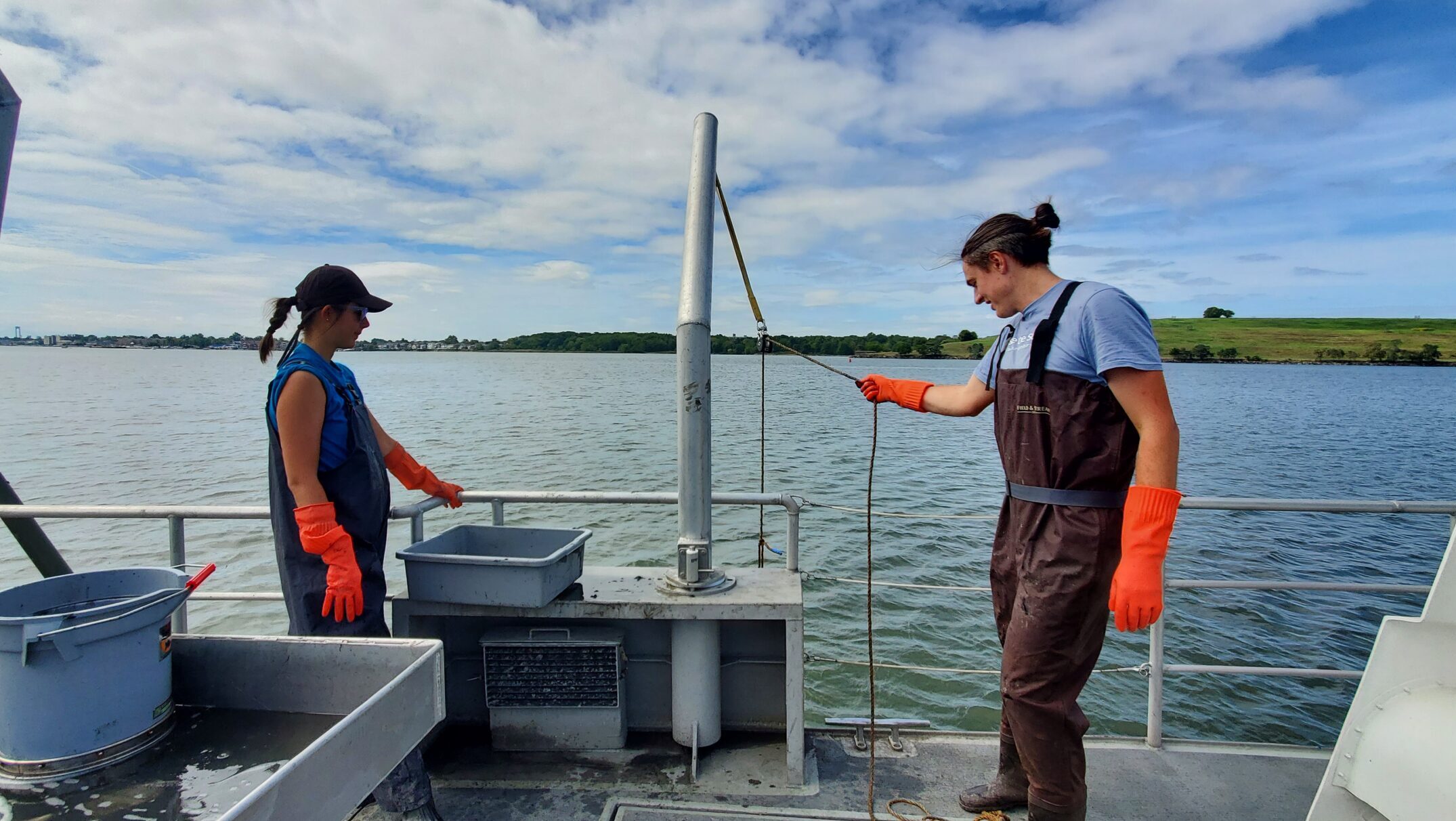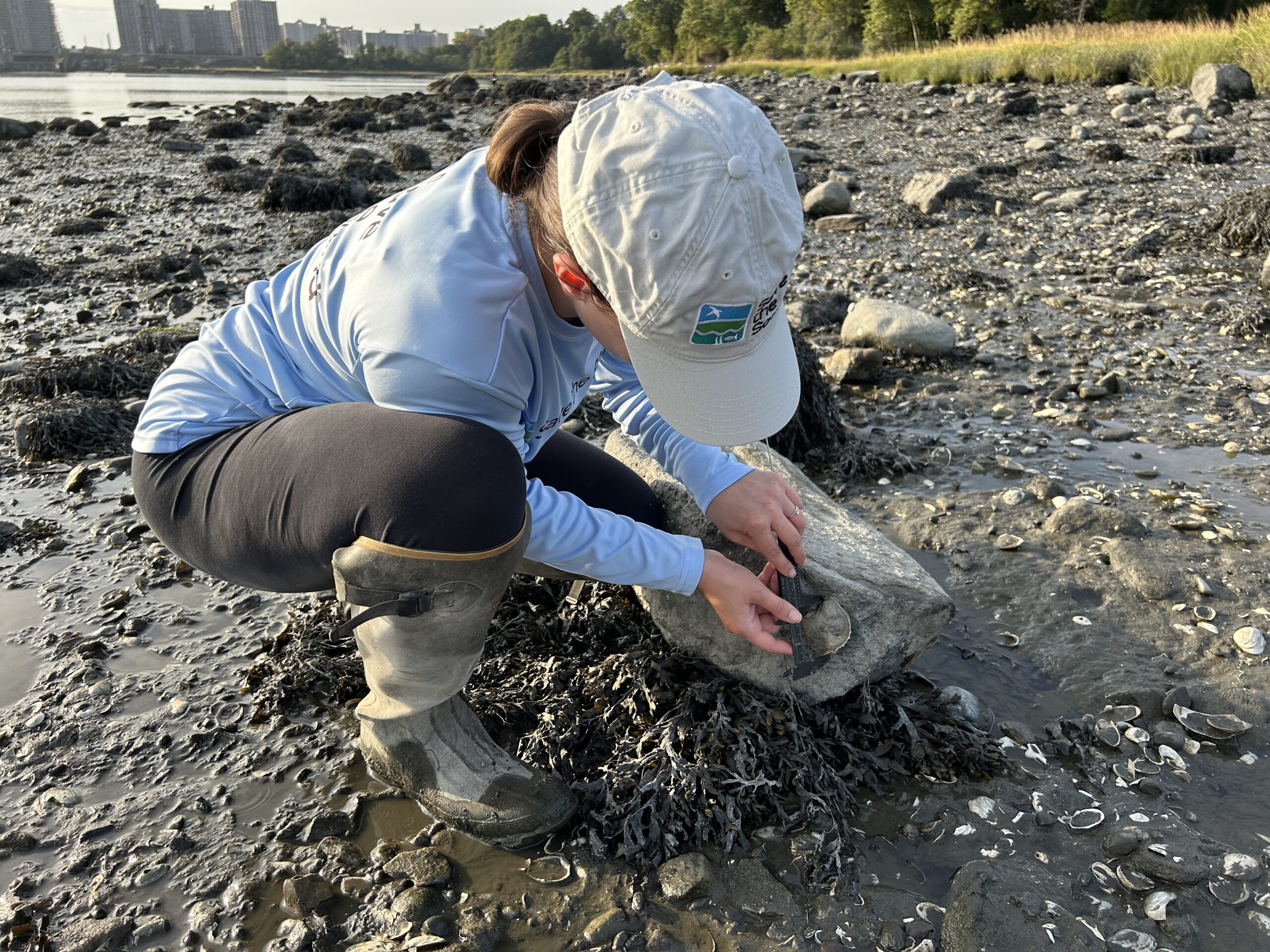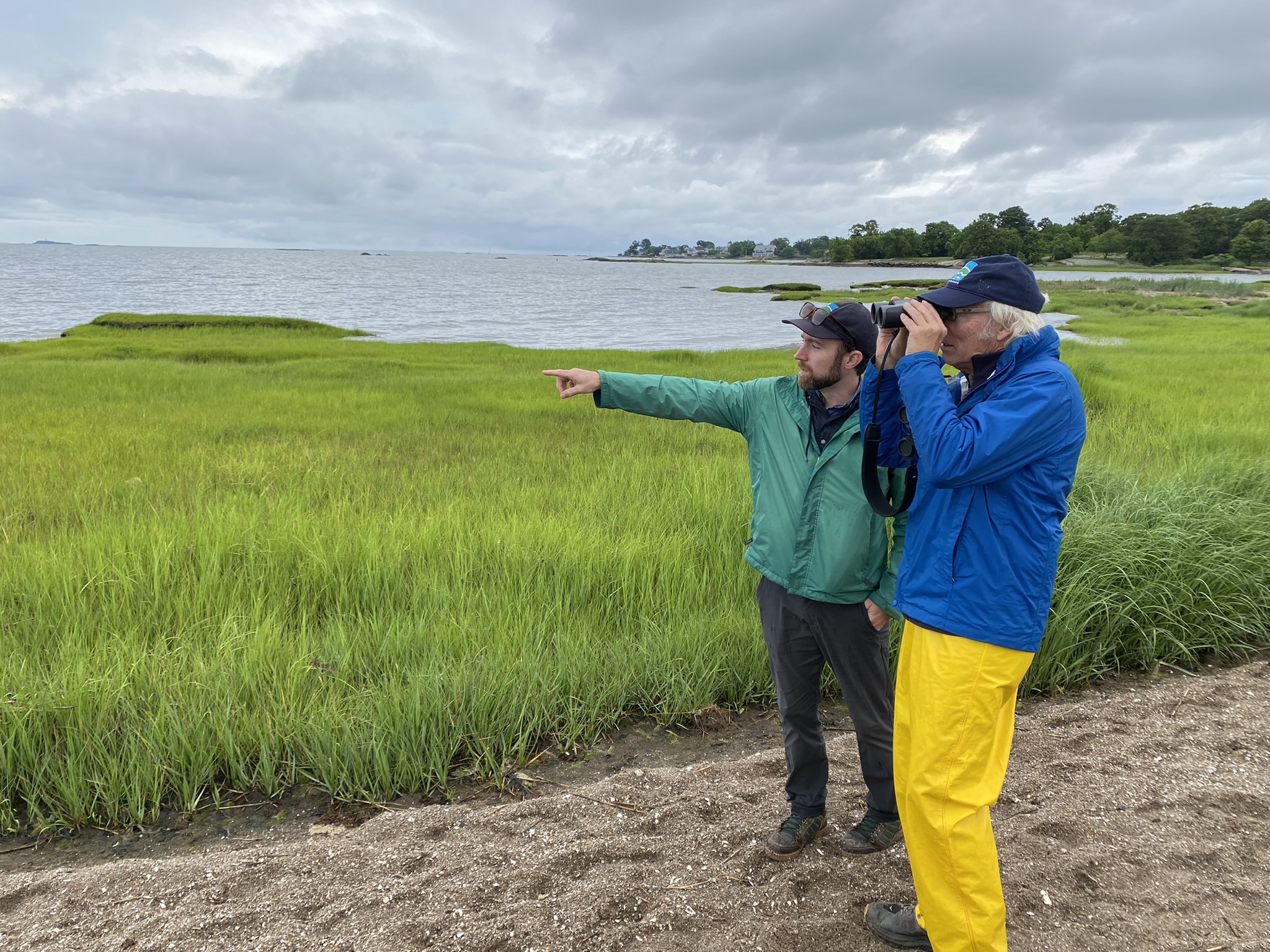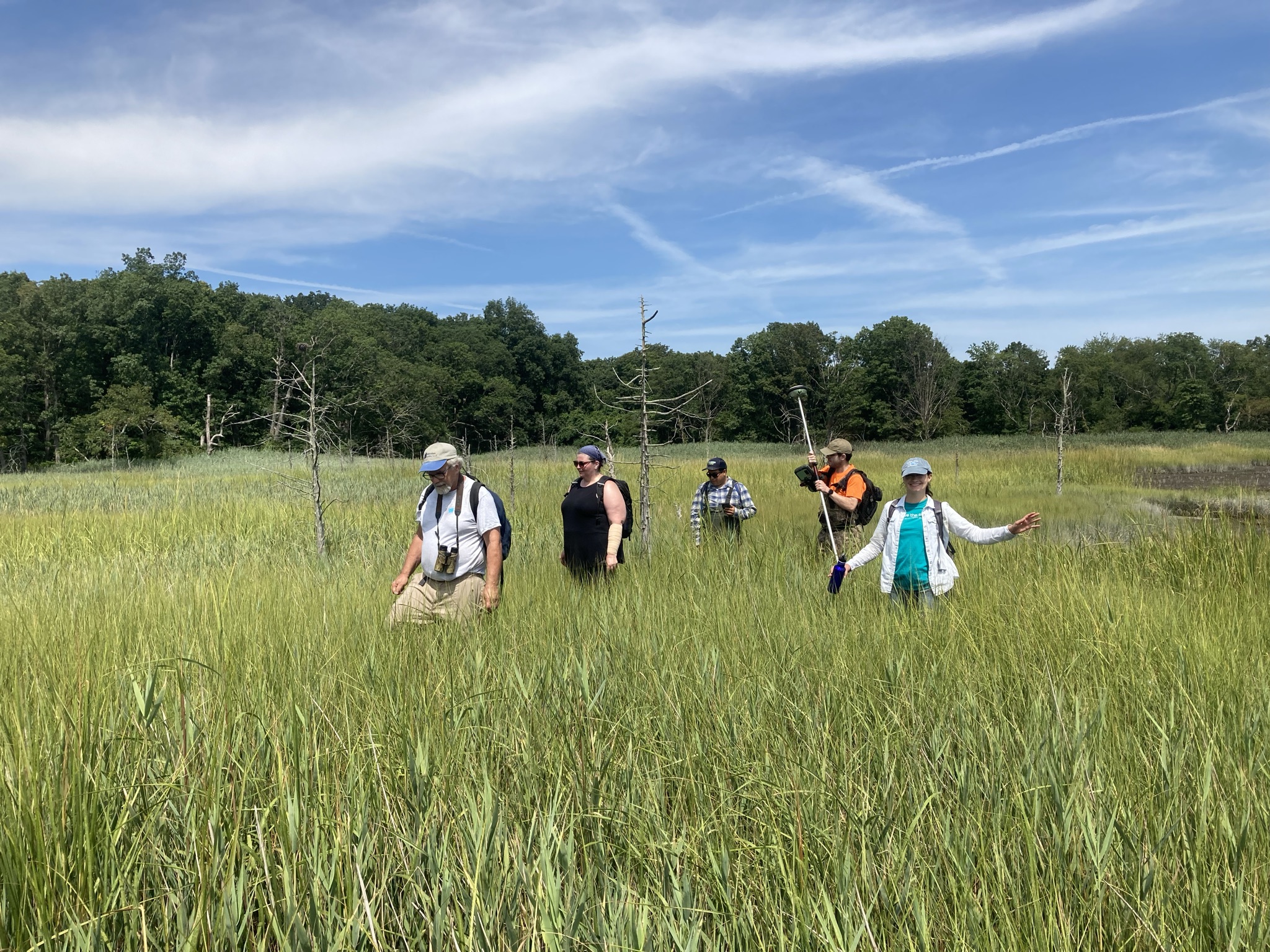2025 Tech Transfer Workshop Field Trips
Due to overwhelming demand, field trips are full, but we will accommodate attendees as best we can day of.
 Two for One Living Shoreline Projects in Stratford, CT | Travel by bus to Stratford, CT for a tour of Great Meadows Park and Stratford Point, two projects with innovative coastal resilience strategies and habitat restoration efforts. First, tour Great Meadows Marsh, a 34-acre restoration site within the Stewart B. McKinney National Wildlife Refuge. This project, led by Audubon Connecticut, the U.S. Fish and Wildlife Service, and several partners, has transformed a degraded marsh into a vibrant coastal habitat by regrading marsh elevations, removing invasive species, and constructing tidal channels to restore natural hydrology. The field trip will highlight the ecological improvements and the project’s strong emphasis on community engagement, including student and volunteer involvement in planting over 155,000 native plants. Then tour Stratford Point, the site of Connecticut’s longest continuous living shoreline project. Led by Sacred Heart University and stewarded by the Connecticut Audubon Society, the living shoreline incorporates multiple techniques to reduce erosion and restore ecological function. Phase 1 began in 2015 with the installation of 270 oyster reef balls to dissipate wave energy, stabilize the shoreline, and create habitat for shellfish and juvenile fish. Since then, the site has been enhanced with a row of oyster castles and, most recently, slipper shells placed in mesh shell bags to protect the marsh edge. The project has been extensively monitored for sediment accumulation and erosion reduction, making Stratford Point a valuable case study in adaptive, multi-faceted living shoreline design. Weather appropriate clothing and closed-toed shoes required. Plan for light walking on uneven terrain. Bus transportation and lunch provided. Public restrooms are available.
Two for One Living Shoreline Projects in Stratford, CT | Travel by bus to Stratford, CT for a tour of Great Meadows Park and Stratford Point, two projects with innovative coastal resilience strategies and habitat restoration efforts. First, tour Great Meadows Marsh, a 34-acre restoration site within the Stewart B. McKinney National Wildlife Refuge. This project, led by Audubon Connecticut, the U.S. Fish and Wildlife Service, and several partners, has transformed a degraded marsh into a vibrant coastal habitat by regrading marsh elevations, removing invasive species, and constructing tidal channels to restore natural hydrology. The field trip will highlight the ecological improvements and the project’s strong emphasis on community engagement, including student and volunteer involvement in planting over 155,000 native plants. Then tour Stratford Point, the site of Connecticut’s longest continuous living shoreline project. Led by Sacred Heart University and stewarded by the Connecticut Audubon Society, the living shoreline incorporates multiple techniques to reduce erosion and restore ecological function. Phase 1 began in 2015 with the installation of 270 oyster reef balls to dissipate wave energy, stabilize the shoreline, and create habitat for shellfish and juvenile fish. Since then, the site has been enhanced with a row of oyster castles and, most recently, slipper shells placed in mesh shell bags to protect the marsh edge. The project has been extensively monitored for sediment accumulation and erosion reduction, making Stratford Point a valuable case study in adaptive, multi-faceted living shoreline design. Weather appropriate clothing and closed-toed shoes required. Plan for light walking on uneven terrain. Bus transportation and lunch provided. Public restrooms are available.
 Tour of Bride Book Estuary at Rocky Neck State Park | Join us for an in-depth field trip to Rocky Neck State Park in East Lyme, Connecticut, where two distinct but complementary restoration efforts are underway to revitalize the Bride Brook estuary and its surrounding marshlands. The Connecticut Department of Energy and Environmental Protection (DEEP) has recently completed a pioneering Thin Layer Placement (TLP) project—the first of its kind in the state—designed to restore degraded tidal wetlands. This initiative involved dredging approximately 5,652 cubic yards of sediment from 1,700 linear feet of the lower Bride Brook channel and depositing it across four acres of marsh platform to elevate the surface, enhance vegetation growth, and improve resilience against sea level rise and storm surges. Separately, The Nature Conservancy (TNC) is leading the Bride Brook Estuary Transformation Project, a multi-year planning and assessment effort aiming to restore full tidal exchange between Bride Brook and Long Island Sound, rehabilitate the 82-acre salt marsh, and improve public access and recreational opportunities within the park. TNC’s work builds upon earlier restoration milestones, including the 2009 culvert replacement that significantly improved fish passage—allowing up to 600,000 alewives to migrate up Bride Brook each year. Weather appropriate clothing and closed-toed shoes required. Plan for light walking on uneven terrain. Bus transportation and lunch provided. Public restrooms are available.
Tour of Bride Book Estuary at Rocky Neck State Park | Join us for an in-depth field trip to Rocky Neck State Park in East Lyme, Connecticut, where two distinct but complementary restoration efforts are underway to revitalize the Bride Brook estuary and its surrounding marshlands. The Connecticut Department of Energy and Environmental Protection (DEEP) has recently completed a pioneering Thin Layer Placement (TLP) project—the first of its kind in the state—designed to restore degraded tidal wetlands. This initiative involved dredging approximately 5,652 cubic yards of sediment from 1,700 linear feet of the lower Bride Brook channel and depositing it across four acres of marsh platform to elevate the surface, enhance vegetation growth, and improve resilience against sea level rise and storm surges. Separately, The Nature Conservancy (TNC) is leading the Bride Brook Estuary Transformation Project, a multi-year planning and assessment effort aiming to restore full tidal exchange between Bride Brook and Long Island Sound, rehabilitate the 82-acre salt marsh, and improve public access and recreational opportunities within the park. TNC’s work builds upon earlier restoration milestones, including the 2009 culvert replacement that significantly improved fish passage—allowing up to 600,000 alewives to migrate up Bride Brook each year. Weather appropriate clothing and closed-toed shoes required. Plan for light walking on uneven terrain. Bus transportation and lunch provided. Public restrooms are available.
 Restoring the Migratory Pathways to Long Island Sound | Join us for an inspiring field trip tracing the dramatic transformation of the Naugatuck River—once one of the most polluted waterways in Connecticut—now a symbol of ecological resilience and community revitalization. Our journey begins with a guided bus ride to the Kinneytown Dam Hydroelectric Facility, where you’ll hear firsthand about the ambitious multi-million-dollar project to decommission the dam and restore fish passage. You’ll be able to explore the powerhouse, learn about the ecological and engineering challenges involved—from sediment management to infrastructure resilience—and how groups like Save the Sound, the Naugatuck Valley Council of Governments, and the Naugatuck River Revitalization Group are leading the charge. Next, we’ll visit the Tingue Dam, where a unique, nature-like bypass channel now allows fish to circumvent the dam. This innovative solution doubles as a beautiful urban park feature—inviting local residents back to the water’s edge and rekindling their relationship with the river. Finally, we’ll visit the site of the former Union City Dam, removed in 1999. Witness the power of nature to heal itself as you walk along a fully restored stretch of free-flowing river—an inspiring example of what’s possible when environmental restoration and community action go hand-in-hand.
Restoring the Migratory Pathways to Long Island Sound | Join us for an inspiring field trip tracing the dramatic transformation of the Naugatuck River—once one of the most polluted waterways in Connecticut—now a symbol of ecological resilience and community revitalization. Our journey begins with a guided bus ride to the Kinneytown Dam Hydroelectric Facility, where you’ll hear firsthand about the ambitious multi-million-dollar project to decommission the dam and restore fish passage. You’ll be able to explore the powerhouse, learn about the ecological and engineering challenges involved—from sediment management to infrastructure resilience—and how groups like Save the Sound, the Naugatuck Valley Council of Governments, and the Naugatuck River Revitalization Group are leading the charge. Next, we’ll visit the Tingue Dam, where a unique, nature-like bypass channel now allows fish to circumvent the dam. This innovative solution doubles as a beautiful urban park feature—inviting local residents back to the water’s edge and rekindling their relationship with the river. Finally, we’ll visit the site of the former Union City Dam, removed in 1999. Witness the power of nature to heal itself as you walk along a fully restored stretch of free-flowing river—an inspiring example of what’s possible when environmental restoration and community action go hand-in-hand.
 Edith Reed Living Shoreline| Join us for a visit to the Edith G. Read Wildlife Sanctuary in Rye, New York, where a pioneering living shoreline project is underway to combat coastal erosion and enhance habitat resilience along the Long Island Sound. In collaboration with the Reef Ball Foundation, Westchester County is implementing a series of innovative, Wiffle ball-shaped concrete reef balls along approximately 750 feet of shoreline near Playland Park. These reef balls, each weighing between 3,000 and 6,000 pounds and standing 4 to 6 feet tall, are strategically placed to break up wave energy, reduce shoreline erosion, and promote the establishment of native marsh vegetation. This approach represents a shift from traditional “gray” infrastructure, like seawalls, to “green” solutions that integrate ecological restoration with coastal protection. The construction of the reef balls was completed in 2024, marking a significant milestone in the sanctuary’s ongoing efforts to enhance coastal resilience. Participants will have the opportunity to observe the reef ball installations, learn about the design and implementation of the living shoreline, and discuss the project’s potential to serve as a model for other coastal communities facing similar challenges. Plan for about an hour and a half bus ride each way, with a workshop activity offered to pass the time, activate the brain, and create a co-learning experience. Weather appropriate clothing and closed-toed shoes required. Plan for light walking on uneven terrain. Bus transportation and lunch provided. Public restrooms are available.
Edith Reed Living Shoreline| Join us for a visit to the Edith G. Read Wildlife Sanctuary in Rye, New York, where a pioneering living shoreline project is underway to combat coastal erosion and enhance habitat resilience along the Long Island Sound. In collaboration with the Reef Ball Foundation, Westchester County is implementing a series of innovative, Wiffle ball-shaped concrete reef balls along approximately 750 feet of shoreline near Playland Park. These reef balls, each weighing between 3,000 and 6,000 pounds and standing 4 to 6 feet tall, are strategically placed to break up wave energy, reduce shoreline erosion, and promote the establishment of native marsh vegetation. This approach represents a shift from traditional “gray” infrastructure, like seawalls, to “green” solutions that integrate ecological restoration with coastal protection. The construction of the reef balls was completed in 2024, marking a significant milestone in the sanctuary’s ongoing efforts to enhance coastal resilience. Participants will have the opportunity to observe the reef ball installations, learn about the design and implementation of the living shoreline, and discuss the project’s potential to serve as a model for other coastal communities facing similar challenges. Plan for about an hour and a half bus ride each way, with a workshop activity offered to pass the time, activate the brain, and create a co-learning experience. Weather appropriate clothing and closed-toed shoes required. Plan for light walking on uneven terrain. Bus transportation and lunch provided. Public restrooms are available.
